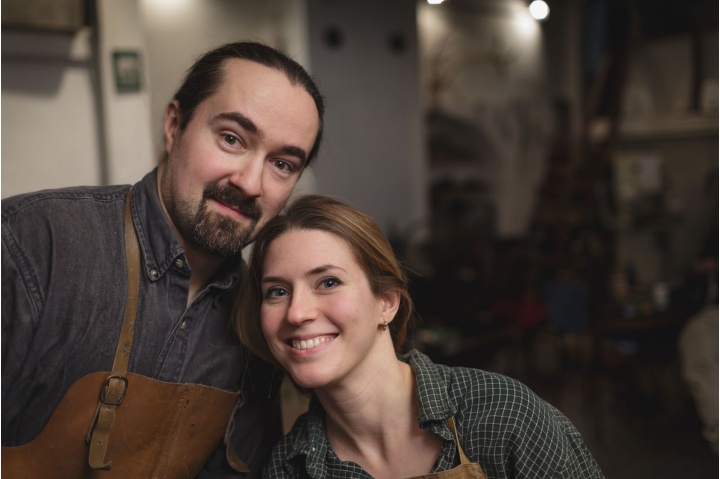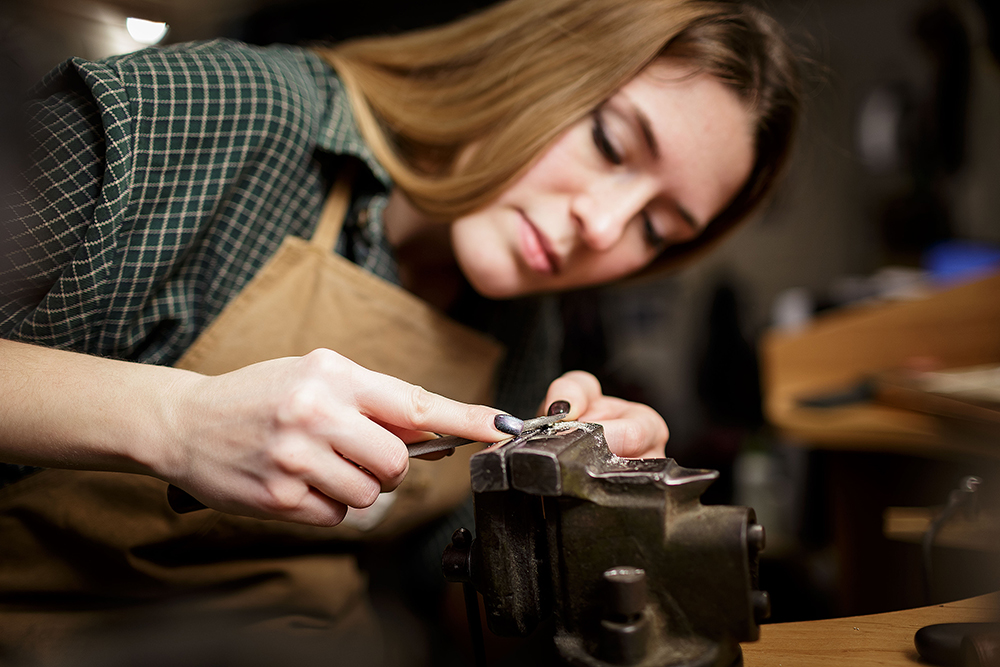
The Makers
In the world of fine craftsmanship, place matters. A workshop is not merely a space for tools and timber — it is a living theatre of creation, memory, and quiet discipline. For many years, the Anistratov workshop stood on the historic Old Arbat in the heart of Moscow, in a space rich with cultural resonance. It was here that Alexander and Maria poured their lives into the art of instrument making, their workshop a sanctuary for tradition, artistry, and sound.

Yet, in 2019, this sanctuary came under threat.
Amidst a shifting political and legal climate in Russia, and with the involvement of the Moscow Union of Artists and the city’s Department of Property, Alexander and Maria were subjected to a forced eviction from their rightful space. What followed bore the hallmarks of a state-enabled raid — a method increasingly used to displace artists, musicians, sculptors, and architects from the very places where their work breathes and lives. By 2021, the workshop had been wholly occupied by outside organisations, the legacy of its past occupants all but erased.
In the aftermath, the Anistratovs undertook the painstaking task of relocating — not once, but twice — each time transporting over four tonnes of machinery, materials, and instruments, and rebuilding their creative space from the ground up. These moves were not merely logistical challenges; they were acts of resilience.
Then came 2022.
In the wake of the war unleashed by the Russian Federation against Ukraine — an unprovoked, devastating act of aggression — Alexander and Maria faced a final, irrevocable decision. In May 2022, unable to reconcile their values with the actions of a state that had placed itself in direct opposition to the civilised world, they left Russia permanently.
Their departure was not just political — it was ethical, moral, and deeply personal. With them, they carried not only their tools and materials, but a lineage of craftsmanship, a refusal to be silent, and a commitment to beauty, dignity, and truth in all that they make.
Alexander Anistratov
At Anistratov Bagpipes, each instrument is a testament to time-honoured craftsmanship — a quiet dialogue between artisan and material, guided by generations of knowledge and the resilience of the human spirit.
Though many might call Alexander Anistratov a self-taught craftsman, such a title would fall short of the truth. His story begins in the sculptural studio of his father, where from the earliest years he was immersed in the disciplines of fine drawing, calligraphy, sculpture, and the subtle shaping of wood. There, a young boy learned to listen — not only to form and proportion, but to silence and substance.
At the age of six, Alexander was gifted his first flute. That moment shaped the course of his life. Music and woodwind instruments became his enduring passion, their design and sound shaping his identity as much as any school or teacher.
After graduating from the Moscow Academy of Fine Arts and becoming a member of the Moscow Artist Union, Alexander established his own workshop as a professional maker of flutes and pipes — instruments cherished for their tonal warmth, precision, and elegant hand-finishing.
Now, in a chapter shaped by displacement, Alexander continues his life’s work in emigration. Though he has left behind his homeland, his workshop, and all that was once familiar, his dedication remains unwavering. Each Anistratov bagpipeis crafted with the same integrity and care, bearing the hallmark of tradition carried forward under the most trying of circumstances.
These are not simply instruments. They are heirlooms of tone and form — created to be held, heard, and handed down.
Maria Anistratova

